Media | Articles
How to make the most of a parts car
Modern enthusiasts have it great. Amazon, eBay, Craigslist, Facebook Marketplace—all of these databases provide instant access to new and used parts for your car. It wasn’t always so simple. Those of us restoring a collector car are keenly aware that at some point in the future (if it hasn’t happened already) parts availability will dry up like Lake Mead. When the waters start receding, it can take a lot of work and money to track down parts you may one day need. At that point, a dedicated parts car starts to look like a seriously appealing option. In one fell swoop you can have your very own supply, all bought and paid for, to pick from as you wish.
I consider myself an authority in these matters as a confessed hoarder of several parts/project cars, all crammed into every possible space I can find. A friend of mine has 2 lifts in his suburban 2.5 car garage and has compacted seven cars (four of which are operable and accessible) and five motorcycles into it. Many cars (particularly sports cars) can be stripped and the shells rolled over on their side with proper padding and/or bracing. Since these cars are generally less than 4 feet high, you can sardine them three-wide this way in a 12-foot-wide, single-bay garage. And, with some clever use of 4×4 posts, another layer of three cars can go on top and still fit under your ceiling! A body shell also can be hung on a wall with the right engineering, as, ahem, “wall art.”
All that said, one should invite a parts car into the fold only with full awareness of the implications. So, let’s take them apart, piece by piece.

The parts predicament, explained
A little background, first. Dealers and auto parts stores are, let’s be clear, in business to make money. Only parts that dealers expect to sell will remain in stock, according to the rules of what are called “inventory turns,” or, how often a particular part moves off of the shelf. Motor oil at your favorite auto parts purveyor has a turn value of 8 to 20 times per year. When that number falls below 2, the shelf space becomes too precious, and parts are moved to “behind the counter”—a dark and mysterious place known only to logo-shirted workers. Then, worse yet, part numbers are relegated to the “warehouse” or “distribution center.” If these places sound lifeless, it’s because they’re the elephant burial grounds of part numbers; once there, the inventory turn will soon get so low that the part number is put on life support. Eventually it disappears altogether, assigned the scarlet letters “NLA” (No Longer Available) with nary a whimper.
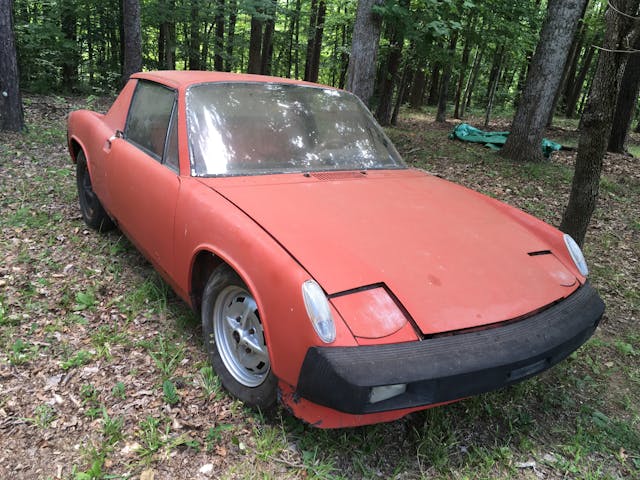
Likewise, when your car’s model is introduced, the manufacturer makes replacement parts readily available. If you drive your new Whatsit 3000 on a vacation and need an oil change a few months later, you expect the dealer to have an oil filter in stock, and they will, even if it’s an Alfa Romeo or Mini dealer four zip codes away. Fast forward a few years into your car model’s life, and tons of parts will remain available, both from the dealers and from the aftermarket. Somewhere about 15 years out, the landscape changes. Parts start to be considered “special order,” at an independent parts counter. One by one, part numbers are dropped off of the list until you are left to your own devices. Eventually, even the manufacturers will run out of parts on your list. Now, the problem falls into the hands of the enthusiast community.
Marketplace
Buy and sell classics with confidence
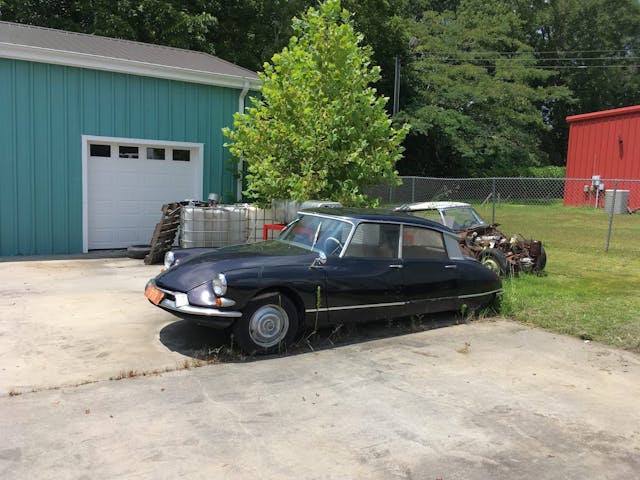
Shopping online
Somewhere along the way, a collector of your particular car has hoarded and stashed parts for a rainy day. If they want to offload some of this booty, it will appear listed online for you to stare at for long stretches of time, wondering if it’s legit. Generally, the chances we take in this arena work out pretty well. I had the great fortune of purchasing a fender online for one of my classic motorcycles, and it arrived in perfect condition, with the bonus of wearing the correct factory color. The part was priced fairly and represented honestly. Makes you feel like the human race has something going for it.
In many cases, these online listings stem from a parts car that the seller is slowly dissolving into the community, one piece at a time. This commerce (enabled by the internet) has, in my estimation, made all of our restoration jobs easier.
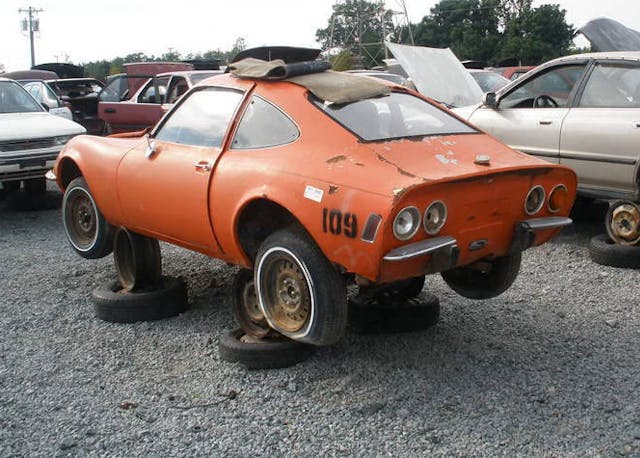
Joys of the junkyard
In the old days, these transactions happened in person, at a junkyard. I have spent many a pleasurable Saturday afternoon shopping at such establishments for 6mm bolts and nuts with 10mm hex heads and impervious yellow zinc plating. (Pro tip: hound the Japanese car aisle for these.) Back when Pull-a-Part, do-it-yourself junkyards came into play fifteen years ago, you would actually see desirable cars strewn about the gravel lots. Fastback Mustangs from the right years, MGBs, Midgets, lots of XJS’s, a BMW 318is—all were showing up at my local Pull-a-Part for slow disassembly by enthusiasts like you and me. It was a public operating theater for the cost-conscious DIYer.
About five years ago, maybe, I noticed the stream of interesting cars at junkyards had dried to a trickle. Everyone’s backyards had been plucked clean, leaving us with junkyards full of gray twelve-year-old Accords and Camrys. If a wellspring of free flowing parts for your car endures, it’s almost definitely a more modern machine. If you’re out of luck, it might be time to bring the junkyard to your yard. As in, buy a parts car.

Buying a parts car
Occasionally you’ll see a dilapidated car, perhaps one with body damage, listed outright as a parts car. Other times it’s thrown in as baggage as part of another transaction:“I’ll accept your lowball offer on my ’67 Torino, but you have to take the awful other one with you, or it’s no deal!” (I picked up two old Triumphs this way and immediately sold the worse one due to lack of space.)
Other parts cars earn their status by virtue of demotion. One of my son’s Porsche 914s suffered this fate. When each of my sons turned 12 or so, I hunted down a broken sports car for them to restore (with my help, or not) so they’d have a car when they turned 16. With the 914 in question, we purchased a slightly rusty, very dead red ’75 model (in 914-speak this means the doors will still close as proof the chassis has not yet collapsed in the middle). We pulled the engine and set about transforming it into a hot rod powerplant. While scouring for parts at a local race shop we found a less dead 914, painted blue. Red 914 was immediately relegated to sad parts car status, and blue car became the not-so-shiny new penny. Fickle is the affection of the desperate.

The red 914 slowly, willingly gave up its parts like Shel Silverstein’s “The Giving Tree,” until we sold its hapless carcass to a doctor in Tennessee. After all, our red car was a less-rusty 914 shell than what he already had.
So, you got one! Now what?
It must be said: Parts cars come with baggage. For starters, they take up room. If your restoration project has already claimed the family garage, adding an identical (but more dead) example of the same car is tough to explain to those outside our hobby. Parking the poor thing in the the driveway or chucking it into the side yard will, at minimum, earn you sidelong glances. Homeowner’s associations, should you be burdened with such a governing body, are particularly, uh, enthusiastic when it comes to visibly decrepit machinery. Before you drag a parts car home, have a plan for a safe place to put it.
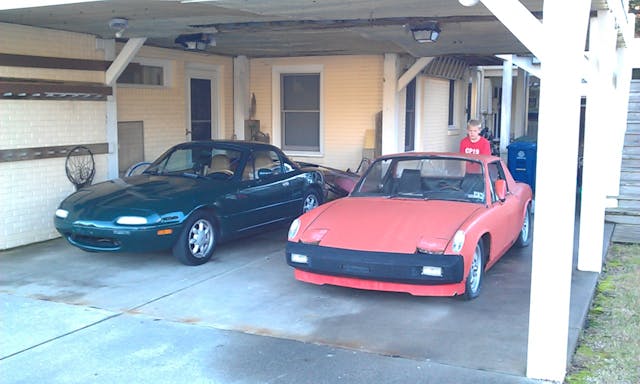
A little creativity doesn’t hurt. Take that lift you always wanted for your garage, which offers the promise of “parts car up high, good car below.” Perhaps you can get permission for outside storage but with the caveat of a deadline, as in “You can store that hunk of crap there for the summer but by Halloween it has to be gone!” In this case I would suggest starting the disassembly process right away. Ziploc bags, hanging tags, and Sharpies are your most important tools for storing and labeling small items. It is quite possible to remove, tag, bag, and store almost a complete car in the rafters of a garage (or a home attic); it is not guaranteed that you will remember which unmarked caliper belongs to the driver’s or passenger side brake when you need it. Fenders, engines, transmissions, and axles don’t apply here, but however much you are tempted, do not leave these exposed to the elements. Even under a tarp in the backyard. Aside from the resentment such a move will brew with your fellow tenants (read: spouse), the parts themselves will deteriorate into an unusable state in about two seasons. Find a place to store them where it is dry and out of the way. Peace will prevail come the day you revisit your patient stockpile.

The other issue with parts cars is one of quality componentry. A caliper that has been sitting out in the weather for a decade is possibly an even worse bet than the leaky one you are trying to replace. Again, in today’s world you might be better off finding a part from eBay or similar. That route can be its own brand of crap shoot, since there exist various grades of crappy parts, trying to make something that is less crappy than the crap you started with. In any case, aim to get as close to factory spec as possible; you don’t want to be stranded because of something stupid, like a blown radiator cap rated for the wrong pressure. The buck stops with you.
How does one know when to err on the side of repair, rather than replace? Hard parts, made from metal, are generally restorable and only are scrap-heap fodder in the worst of cases (cracked, pitted, etc.). Plastic and upholstery parts, however, do not age as well, and sometimes what’s left from the parts car is no better. Occasionally it’s even worse; a parts car is always neglected in favor of the recipient car, which means degradation can happen even faster than on a car that is regularly driven. Nothing is more frustrating than digging out a part on your donor car, only to find it’s useless. Why did I buy this pile of garbage in the first place, you will scream at the heavens.
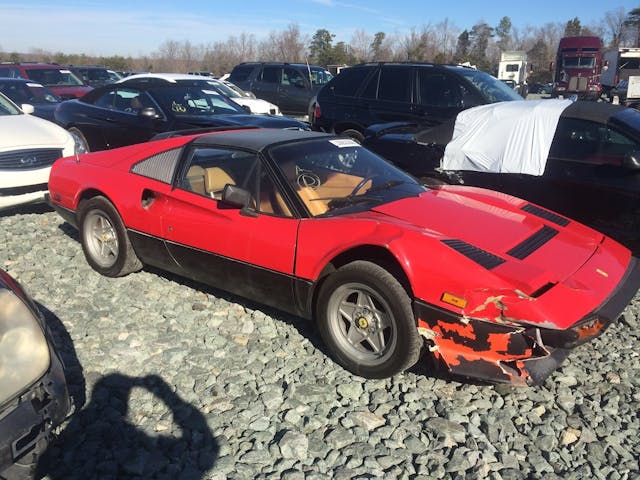
Be realistic, be practical
We car restorers, by nature, are an optimistic bunch. Sure we can fix that, we say to ourselves. Of course having a parts car is a good idea … No one will mind if I get another project car—it’s who I am, for goodness sake. As comforting as a parts car may be, one has to take care and keep perspective. Some cars lend themselves to hoarding, for whatever reason. I have met dozens of men with a flock of Corvairs. MG Midgets/Sprites invoke the same instinct (maybe because they’re small?). Watch a few episodes of Barn Find Hunter and you will see lots of folks who seem to find safety in numbers. At a certain point, too many cars makes life harder, not easier. Everyone’s threshold here is different.

Have fun, enjoy it
If you have the land for it, a parts car can bring a lot of happiness. You can even be magnanimous about it by spinning up a very satisfying hobby business, helping like-minded owners of the marque by selling them parts online for easy beer money. If, however, you happen to be hawkeye-focused on a singular restoration project, and space is an issue, letting others store your “parts cars” remotely may make more sense. Whether this will cost you rental fees or simply goodwill with friends depends entirely on your situation.
Just remember to honor your parts cars for their sacrifice, and make sure to take extra-good care of the car you’re keeping alive. Best to gather up good karma before passing through the gates of the big junkyard in the sky.
Check out the Hagerty Media homepage so you don’t miss a single story, or better yet, bookmark it.
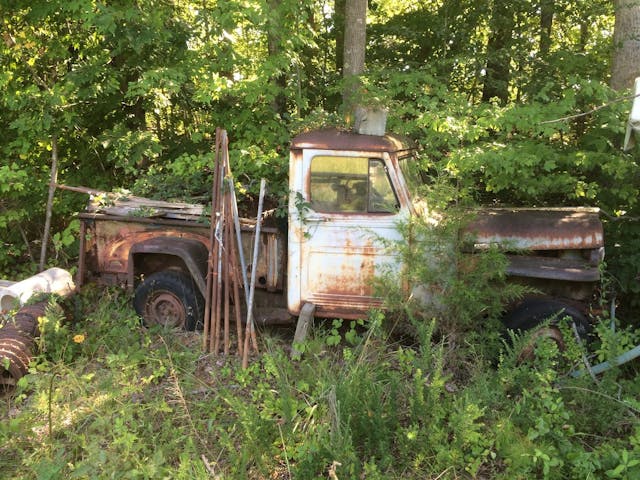













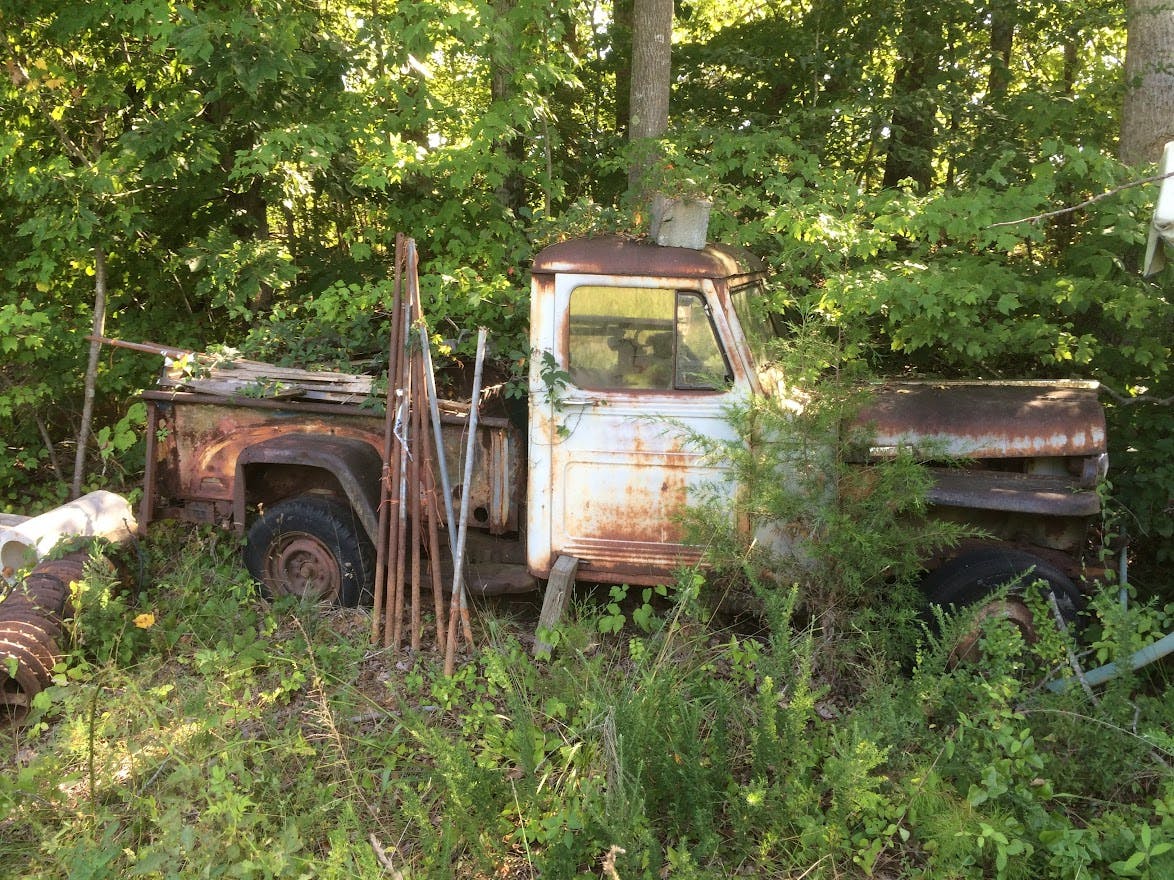
I bought a parts car for my Alfa 164S 18 years ago. I doubt I’d still be driving it if I hadn’t.
Parts are really getting scarce, especially in the USA. “NLA” is now the expected norm.
Every car labelled “parts car” that I have ever bought has been turned into a runner. Big-city yards and garages have always been the constraint. When I was younger and (more) strapped for cash, I upgraded a number of parts cars into daily drivers, even commuters. It helped to live in the western quarter of the continent and start out with unrusted bodies, of course. I never tried it back east. A 1962 Studebaker Lark, for example, with some appropriate patching, carb cleaning, brake shoes, and such became a runner that I even drove longer distances on the highway a few times. Its rear brake drums failed eventually and finding replacements turned out to be harder than you might imagine… I needed a parts car for my parts car! There was also a somewhat spavined 1964 Valiant convertible that I kept going for a few summers, then sold as a “project” since it was running and driving (if somewhat lopsidedly — thanks, torsion bar mounts!). The guy who bought it was a welder, and he knew what he was getting into. And then there was the Renault Alliance GTA convertible with the cracked frame… “parts only” — impossible to register as-is for normal use where I lived, and too expensive to get fixed. I did a timing belt just in case and drove it on a “classic” regi (not requiring inspection, but limited use allowed) for a summer, and duct taped the roof as needed. I passed it on at cost to a friend eventually, and he continued to drive it as a classic.
Well #1 rule if your car is worse than a parts car you chose the wrong car to restore.
#2 know what parts are in demand and needed then look for a parts car that has the greatest amount of those parts.
#3 try to find one that runs. Easier to move.
#4 strip it down and scrap the rest. The car will just continue to fall apart and the hood parts can become scrap.
#5 junk yards due to EPA rules and regs are not keeping older cars from The 80’s and older so finding junk yard parts is difficult.
#6 If you have a number of parts you don’t need sell them on E bay. Other can use them and often you can make back the money spent on the car.
Having a car like a Fiero it is hard to find many parts but many parts cars are loaded with quality parts. The seats are in demand not only by Fiero owners but street rodders and kit car guys. A pair of seats can recover the cost alone.
I have space but I also respect my neighbors and try to not make the place look like a dumping ground. Keep that in mind too as the laws against unregistered cars came due to people not respecting the neighbors.
i dont agree with your #4 an old car should NEVER be scrapped until it fits in a 5 gallon bucket, there’s always someone that needs something. IMO
i get bad comments all the time because all i do is PART OUT OLD CARS (hobbyist not a business) and everyone thinks my cars should have been “saved”. I tell them all the same thing “you can’t save them all, where would you get the parts?” Plus some folks live where they are not allowed to have cars sitting around but i can so i do, so I’m the guy that helps others save theirs by sacrificing mine. check/search me out at under1981 auto parts if you need pre-1981 American USED parts and maybe i can help save yours? Thanks
I have had many parts cars over the last 40 years. Every one was a treasure trove for my project at the time. Then I sold the parts I didn’t need usually for well above the initial cost of the car. This is good advice that I have shared with many: cover the parts car (if stored outside) with a good quality camouflage tarp. People will not see it! Do not use the bright silvers or blues, etc. This sounds too simple minded to be true. But it is.
They didnt make a 67 Torino.
I (as a Mopar guy) caught that as well. That’s what happens when Fiat/Porsche/VW guys try to sound butch.
Around 2014 we totaled our 2005 Buick Rainier V8, I liked the car enough to find a 2006 Rainier so I bought the Totaled 2005 back for about $700. It had about 10,000 miles on the Michelin tires, and it really ran great, other than body damage and a bent axle, it was fine, I could even drive it, but not far. By the end of the time with our 2006, I remember using the following parts
I had used the Alternator, (saved me $200 for a new one)
used the passenger seat to fix the lumbar support in the 2006,
used the tires and saved $1000+
used the transfer case actuator saved another $200
Then we bought my daughter a 2006 Rainier I6 and I used a ton of little parts for her car too
ended up selling the remainder of the parts to the junkyard for $600
All in all, I was fortunate as I had a place to store the vehicle, but it was well worth keeping it as it more than paid for itself.
I have 4 other parts cars I pull from as well
Aside from the aftermarket exhaust and clutch cover, that red 2006 Ducati Multistrada looks exactly like mine, which is completely stock. No you cannot have it for parts.
I get my parts cars to strip down and get as much off as possible for me, then I post the rest on the FB groups at a reasonable price, then the rest goes to the scrap yard.
I love the process of parting out since it gives me experience with what it will take to replace a part on my running car. Even if I it’s not a salvageable part I’ll practice removing it. If I break a clip or bolt it’s not as critical and I know where to be careful the next time. Parting out also let’s me see where some of the hidden problem areas for rust are.